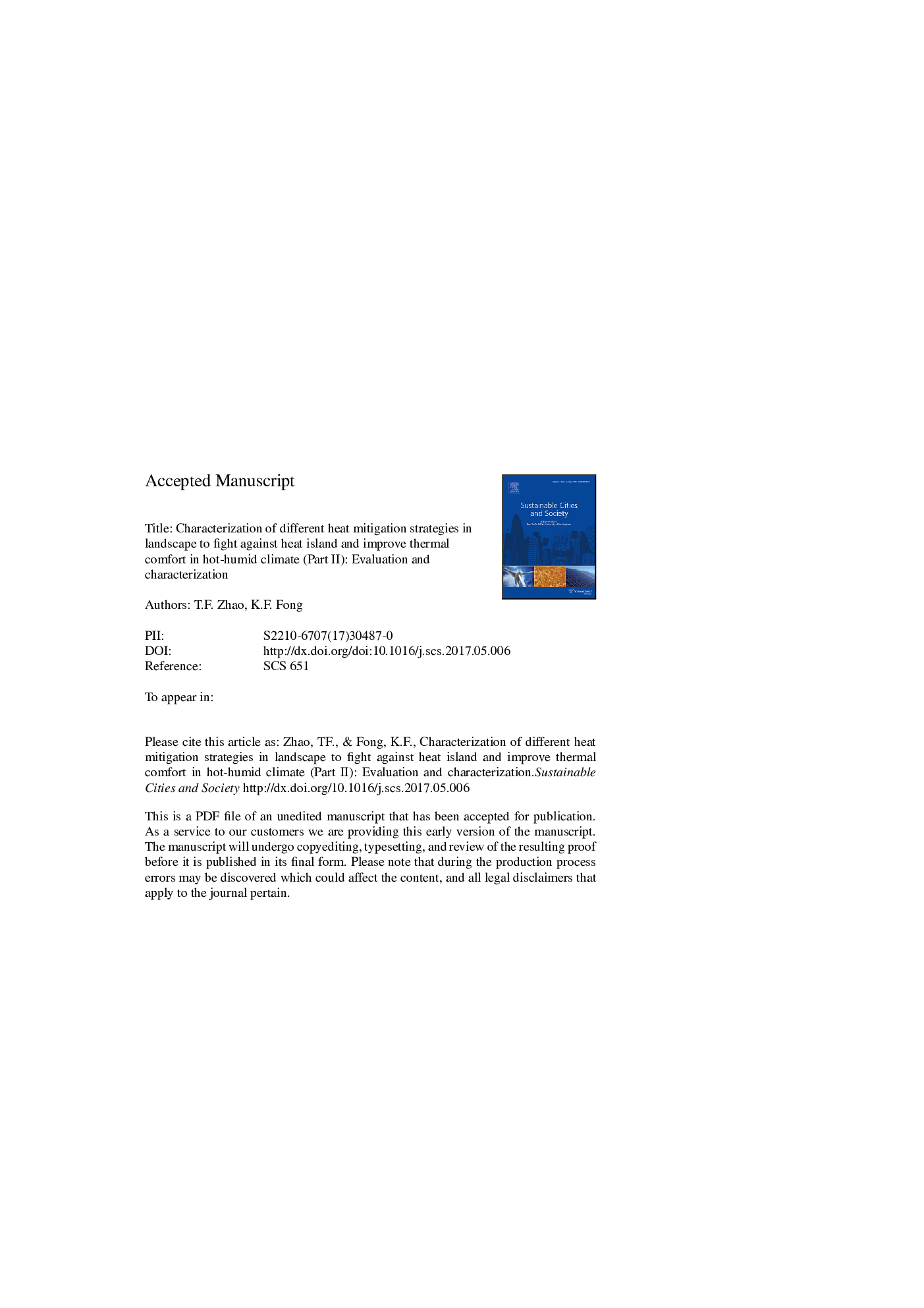| Article ID | Journal | Published Year | Pages | File Type |
|---|---|---|---|---|
| 6775773 | Sustainable Cities and Society | 2017 | 25 Pages |
Abstract
This is Part II of the study, aiming at analyzing and characterizing the cooling potentials of heat mitigation strategy (HMS) in landscape from both combating urban heat island (UHI) and alleviating human heat stress, in terms of air temperature reduction ÎTa and Physiological Equivalent Temperature reduction ÎPET respectively. Here, different HMSs for landscape design were investigated, including vegetation (Green-HMS), high albedo pavement (Grey-HMS), water body (Blue-HMS) and hybrid of trees and landscaping surface (Hybrid-HMS). Parametric study was conducted with a validated urban open space model developed from ENVI-met V4. Through ÎTa and ÎPET, the cooling benefits of each HMS were evaluated with the area coverage ratio RHMS and the corresponding parameters. Generally, larger RMHS would have both higher ÎTa and ÎPET in various HMSs, except Grey-HMS. Hybrid-HMS demonstrates the greatest heat mitigation potentials, followed by Green-HMS, Blue-HMS and Grey-HMS. Hybrid-HMS has further cooling benefits compared to the landscape design with singular HMS. For Grey-HMS or Blue-HMS, its heat mitigation potential evaluated by ÎTa is different from that by ÎPET, so both aspects should be considered in landscape design. Consequently, characterization charts of different HMSs are established, which would help the urban design practitioners create comfortable open spaces in hot-humid climate.
Related Topics
Physical Sciences and Engineering
Energy
Renewable Energy, Sustainability and the Environment
Authors
T.F. Zhao, K.F. Fong,
